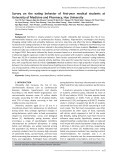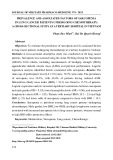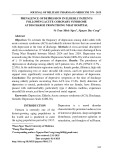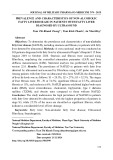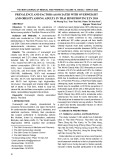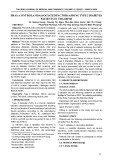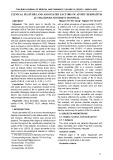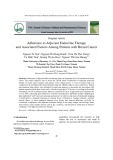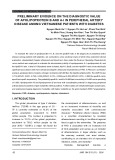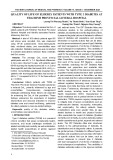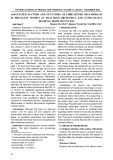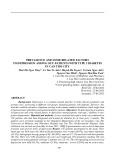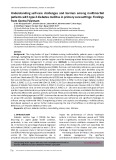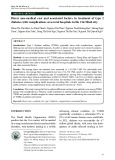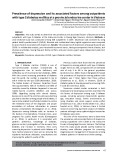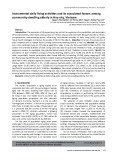
83
Journal of Health and Development Studies (Vol.08, No.01-2024)
Pham Thi Thu Hien et al.
DOI: https://doi.org/10.38148/JHDS.0801SKPT24-001
ABSTRACT
Introduction: Type 2 diabetes mellitus (T2DM), especially those with complications, requires
lifelong care and incurs substantial expenses. In order to reduce out-of-pocket costs borne by patients,
understanding costs including direct non-medical cost is important. This study aims to examine direct
non-medical cost and related factors among T2DM with complications.
Methods: A cross-sectional survey of 617 T2DM patients conducted at Thong Nhat and Nguyen Tri
Phuong hospitals from May 2023 to July 2023 using convenience sampling method. Generalized linear
regression models were used to examine the effect of having complications on direct non-medical cost
and other associated factors.
Results: The average direct non-medical costs amounted to 1,351,706 VND. For individuals with
complications, the average direct non-medical cost was 1,716,756 VND, nearly 1.81 times higher than
those without complications. Regarding type of complications, having both complications incurred
higher cost than those without complications (245631.8, 95%CI: 29952.3-461311.4, p=0,026), adjusted
for other factors. The factors associated with direct non-medical costs included place of residence,
educational attainment, having health insurance, traveling with a family member, using personal or
public transport, using supplementary foods, and the patient’s income (p < 0.05).
Conclusion: This study, among the first to analyze differences in direct non-medical costs among T2DM
groups with complications in Vietnam, could contributes to understanding the economic dimensions of
T2DM and provide valuable insights for future interventions aimed at alleviating the economic burden
of T2DM on patients and society.
Keyword: Direct non – medical cost, type 2 diabetes, complication, associated factors.
Corresponding author: Nguyen Thi Quynh Nga
Email: nguyenthiquynhnga@ump.edu.vn
1
Thong Nhat Hospital, Ho Chi Minh City, Vietnam
2Nguyen Tri Phuong Hospital, Ho Chi Minh
City, Vietnam
3Department of Pharmaceutical Administration,
University of Medicine and Pharmacy at Ho
Chi Minh City, Ho Chi Minh City, Vietnam
Direct non-medical cost and associated factors in treatment of type 2
diabetes with complications at several hospitals in Ho Chi Minh city
Pham Thi Thu Hien1, Le Dinh Thanh1, Nguyen Thu Thao2, Nguyen Tran Khuong Bac3, Hoang Ngoc
Tram3, Nguyen Kim Triet3, Dang Thi Kieu Nga3, Nguyen Thi Hai Yen3, Nguyen Thi Quynh Nga3*
ORIGINAL ARTICLES
Submited: 10 January, 2024
Revised version received: 22 February, 2024
Published: 29 February, 2024
DOI: https://doi.org/10.38148/JHDS.0801SKPT24-001
INTRODUCTION
The World Health Organization (WHO)
predicts that the 21st century will be marked
by a surge in endocrine diseases and metabolic
disorders, with diabetes leading as a swiftly
advancing chronic condition (1). T2DM
specifically constitutes a substantial 87% to
91% of all chronic disease cases worldwide.
In 2021, diabetes was accountable for 6.7
million global deaths, with more than three-
quarters of adults affected residing in low-





